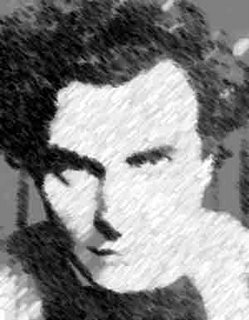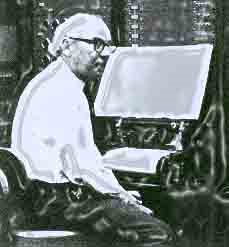Audio Arts:
Recording Drum KitGetting a good sound from an acoustic dum kit has always been a challenge. To start with make sure your skins are fairly new and are tuned accordingly.All the nuts are tight and are not in contact with any another drum as this will produce undesirable noise.There are various techniques which one can apply depending on style/genre/skill of the player.When recording a rock or metal band the focus lies on giving as much detail whereas a jazz player would like more acoustic properties of the space blended with the sound of his kit.
Close Miking: This is a very common practise for live situations in larger venues and is very often used in recording studios. Each drum of the kit is closely and separately miked giving you every possible detail.
Kick: Hole mounted, not touching; 15-20 cms from the skin.Applying correct padding is very important as this will contribute largely on the thickness and punch of your bassdrum.Make sure you pedal is not making any unnecesssary noise.
Microphone choice: Beta 52,AKG's or Sen MD421
Snare: Snare requires a mic that can handle very high SPL so a dynamic microphone is usually chosen. To avoid picking up the hi-hat in the snare mic, aim the null of the snare mic towards the hi-hat.we applied another microphone at the bottoom of the snare to capture the vibrations produced by the snare.This can give you interesting results as the gros notes would be more audible. But, remember the phasing issue caused by microphones facing each other.Inverting this track would correct it .A combination sound of both the microphones would give you a desirable result.
Microphone choice: Shure Sm58, 57,Sen825
Toms: One microphone with a wider polar pattern between 1st and 2nd Tom, close to the head (approx 5-10cms depending on how it is sounding). Alternately one can use NT4, as it would give each mono channel for both the toms.Have an individual microphone for your floor tom and apply similar techniques.
Overheads : Cymbals (ride, crash, splash, china, hi hats): The brilliance and high frequencies of cymbals are picked up best by a flat response condenser mic. Two condenser microphones panned hard left and right at a reasonable height above the toms.
Microphone choice: NT5, Newman K57i.
This would give the stereo image of the recording source. Also, a pair of microphones at a distance captures instrument timbres more accurately than close up mics. Close-miked instruments sometimes sound too bright, edgy, and detailed.This is what the player has to decide depending on the genre of music he is playing and the sound he is after.
Choice of Microphones: Omni, condenser with a large diaphragm about 1.5-3 meters from each other. Microphones like U87/89; AKG C414
Drum kit is what drives the music together with the bass player.Spend as much possible time on getting just the right sound you are after.Apply correct microphone placement techniques with "just" the right gain structure.
{Good Luck..!}Forum: Listening
1.
Edgard Varese (1883-1965)
Ecuatorial 1934
bass singer, 4 trumpets, 4 trombones, piano, 2 Ondes Martenot and 5 percussion
performed by The Contemporary Chamber Ensemble with Arthur Weisberg conductor
Nonesuch Records 1972 H-71269
http://www.karadar.com/PhotoGallery/varese.html 13may'06
2.
Milton Babbitt : b 1916, Philadelphia
Ensembles for Synthesiser 1954
Columbia MS 7051
Milton Babbitt is an american composer, teaches at Princeton University and Juilliard as Professor of Composition
http://www.furious.com/perfect/ohm/babbitt.html 13may'06
3.
Barry TruaxThe Wings of Nike 1. Album 1987
Perspectives of New Music PNM 28
-- for computer images and two digital soundtracks
--Professor in the School of Communication and the School for the Contemporary Arts at Simon Fraser University for acoustic communication and electroacoustic music.
http://www.sfu.ca/~truax/bios.html
Forum discussion about music technology and its interdisciplinary strands. A brief history of electronic and computer music at
EMU .
Panel members --
Stephen Whittington :Director of Electronic Music Unit at the the Elder Conservatorium and teaches composition, music theory, acoustics and electronic music.
Dr Mark Carroll :
A Senior Lecturer in Music at the Elder School of Music at The University of Adelaide.Tristan Louth-Robins (Masters student at EMU)







